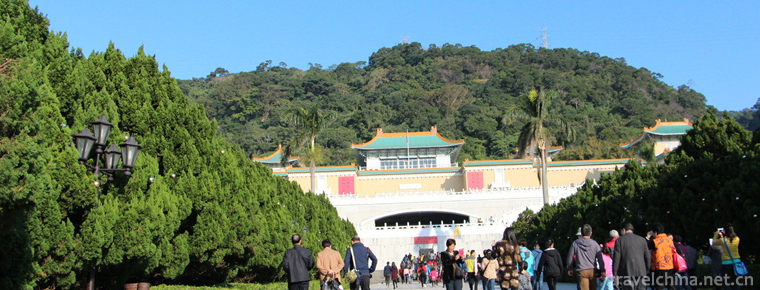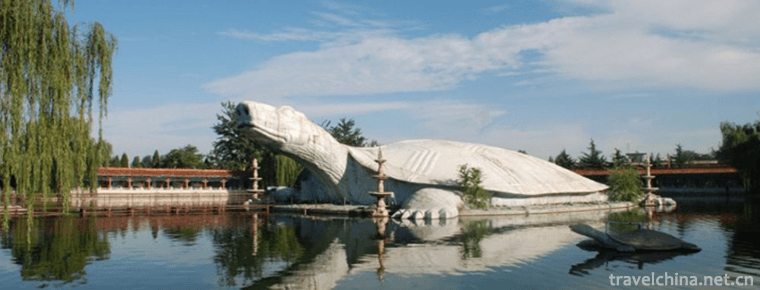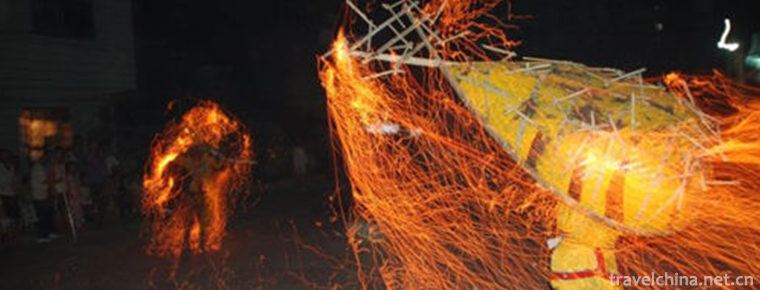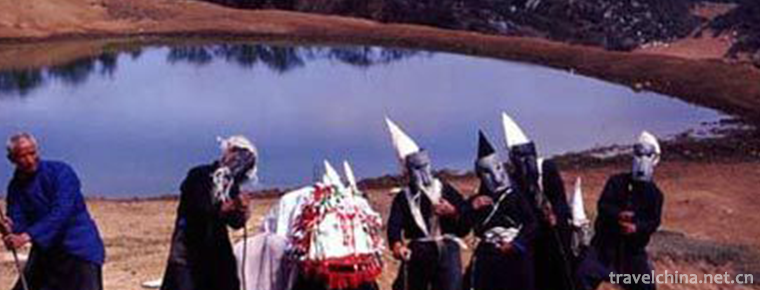Dark pass
Dark pass
Dark Biography, as the first Creation Epic of the Han nationality, is represented by folk songs and songs. It began to circulate in the Ming and Qing Dynasties. "Biography of Darkness" was discovered by Hu Chongjun, a cultural cadre in Shennongjia Forest District in 1984, and has attracted the attention of academic circles at home and abroad. The first edition of Shennong Wen Yi magazine, sponsored and published by Shennong Cultural Research Association, published the commentary and collation edition of Dark Biography for the first time. The publication date was about 1992. As a "living fossil" of ancient culture, it is of great value to the study of ancient mythology, history, archaeology, literature and art, religion, folklore and so on.
In 2011, "Biography of Darkness" was approved by the State Council and listed in the third batch of national intangible cultural heritage list.
Content outline
At the beginning of the celestial body, it was only a mass of gas, a chaos, diffused in the darkness, and there was no water at first. After the efforts of many generations of gods and men, a god named Jianggu came into being and made water. At that time, the sky sprouted and a dew droplet grew. Dew drops were swallowed up by a god named "the wanderer". The prodigal swallowed dew and died. His corpse was divided into five parts, and thereafter it became pentagonal. On the ground, there are entities, oceans and the Kunlun Mountains. Pangu was born when the Kunlun Mountains spit blood and water. Pangu invites the coming sun and the moon, opens up the world, and finally Pangu is dying incarnate. His trunk is transformed into everything on the earth: the Wuyue Mountains, the sun, the moon and stars, rivers, lakes, seas, vegetation and forests, etc. After Pangu's death, the earth's stones, plants, animals and animals turned into a variety of gods, at this time there was no real human beings. The gods fought against each other, making the world dark until the flood overflowed and drowned the evil. The battle between Huanglong and Black Dragon appeared again in the flood. A god named the Virgin Mother Wu came to help Huanglong defeat Black Dragon. Huanglong lays eggs and thanks each other. The Virgin Mother of Wu Tian swallowed the dragon's eggs and gave birth to three gods and men: a god, a land and a hell. In the flood, five dragons floated in the East China Sea with a big gourd. When the Virgin Mother opened the gourd and saw a couple of brothers and sisters, Fuxi and Nuwa, she persuaded them to marry. Only then did she give birth to the creators, and only then did flesh and blood come into being.
From the content of Biography of Darkness, we can see that there are many similarities between the Creation Epic of the Han nationality and that of many other nationalities in the world, especially the "flood soaks the sky". According to investigation, "Biography of Darkness" in the Ming Dynasty has a woodcut, Shennongjia's old people have seen such woodcut, unfortunately, it has been lost. However, some old singers said that "The Biography of Darkness" began to circulate in the Tang Dynasty. Although its age is not yet certain, its long history is beyond doubt.
In 1987, Hu Chongjun, who discovered, sorted out and commented on Biography of Darkness, was awarded the Quyuan Prize by the Hubei Provincial Culture Department and Provincial Literary Union. He was praised as "Homer of China".
For more than ten years, Hu Chongjun has been running around Shennongjia tirelessly. In the collection and arrangement of folk stories, folk songs and ballads, the results are brilliant. In addition to the Biography of Darkness, he collected more than ten long folk narrative poems, such as Gangjian, Qiyuan Zhuan, Mixed Yuan Dynasty, Famine Chronicle and Three Kingdoms Biography. Taoist and Buddhist singing books included Nuwa Zunjing, Sanhuang Jing and Sun Zhenjing. Folk songs collected included Qinshihuang Song, Making History Song and Wedding Ritual Song. It can be said to be vast.
Historical origin
Dark Biography seems to be published quietly, but on the Internet, news about it is almost overwhelming. Hu Chongjun, a collector living in Shennongjia mountains, has more information items on the Internet than many writers. As a matter of fact, "The Biography of Darkness" was discovered and published in Hubei, but then it aroused great interest of Chinese scholars in Hong Kong, Taiwan, Singapore and the world. When it was unpublished in the past few years, readers and scholars from abroad and Taiwan wrote to inquire about its progress. The Han nationality has finally ended its history of being called "Creation Epic without Myth of Its Own".
Creative meaning
You can imagine the significance of this book for future generations. It can be said that this book is the earliest "genealogy" of our nation and should be known by everyone and even the people of the world. The Biography of Darkness is a myth. The Han people living in Shennongjia have unbelievable imagination. As we all know, people were drowned after the flood. Fuxi married Nuwa's siblings and became the ancestors of people, and so on. But before the flood, Dark Tales had come up with many centuries, many ancient ancestors. It is not only dazzling to see this ancient genealogy, but also amazing to see its unbounded magical imagination. It is believed that everyone who reads it will be fascinated by the magnificent and wanton scenery, and will be fascinated by its literary grace, even without any surrender. Nine Songs is inferior, even more than countless times.
Author introduction
Who was the first author of this wonderful book with multiple editions? Certainly this will be a mystery for thousands of years. It is correct to say that it is a system passed down from one thousand to another, continuously expanded and perfected. The problem is that such a rich, spectacular and dusty album has been circulated and preserved in the desolate, remote and barren mountains of Northwest Hubei. What is the reason? It seems that it is like those precious solitary beasts. Only desolation and silence are the barriers to its life.
Then, as the excavator of this great treasure, Hu Chongjun should be respected. This simple-dressed and happy collector, a great scholar living in the mountains, has devoted almost all his life to this book. In my long contact with him, I found that he had been addicted to this, unable to extricate himself, and his whole life was integrated with The Biography of Darkness. He had poor housing conditions (which had improved in recent years), closed bedroom doors and windows, suffocating mildewed air, mice running in glass-free cupboards and never brushing his shoes. Usually Yanyan, smoking, look very unnatural. However, as long as we talk about "Biography of Darkness", folk songs and folk stories, we will be full of splendor and witty words. With his talent, he can be a good prose writer and poet (his wonderful prose and poems are limited in length I don't want to quote here), but because of an occasional opportunity, he became fascinated with The Biography of Darkness, and prepared for a lifetime to sort out the book.
Collection and arrangement
Hu was born in a family of military officers. His ancestor was a guerrilla officer of the Qing Dynasty. His ancestor was from Zhejiang Province. His family was in the middle. His ancestors sold mules and horses in Sichuan, and later settled in Shennongjia. In order to collect and sort out The Dark Story, he could not care about his family. Both wives left him. He has collected nine copies of Biography of Darkness, each of which has to go through numerous visits, including Biography of White Darkness, Biography of Red Darkness and the copies of Shennong's ancestors, as well as some bizarre copies such as Biography of Xuanhuang, Dark Pantou, Outline of Darkness and Tales of Confused Elements, which have laid a solid foundation for enriching his collation. Foundation. Today, more than 5,000 lines of official publications have been dipped in his painstaking efforts. It is important to note that most of the singing books are incomplete, some hundreds of lines, some thousands of lines. It is difficult to sort out such a messy and repetitive story even once. But the fluent epic we see today feels like a thousand miles away. It's really an artistic genealogy. We should be proud of our great nation. The history of the ancestors'creation of heaven and earth is really resounding, majestic and vigorous. In addition to thanking Hu Chongjun, we should also thank Shennongjia, the mountain standing silently in the distance, for preserving the memory of our ancient blood lines with her loyalty, making our nation have the warmth of memories, and will hold us together tightly.
Honors
On May 18, 2010, the Ministry of Culture of China published a list of the third batch of recommended items (new items) of the national intangible cultural heritage list. Baokang County and Shennongjia Forest District were listed on the "Biography of Darkness" which were packaged and declared. Included in item 30 of the folk literature project, namely "Biography of Darkness" declared jointly by Baokang County and Shennongjia Forest District.
Story legend
Babylon, Egypt, India and China, known as the four ancient civilizations in the world, all have their own national epics. The Babylonian Creation Epic Enuma Ericsson is recorded in wedge-shaped script on seven mud tablets, which were discovered by British archaeologists in today's Iraq in 1845. These mud boards date back to about 1000 B.C., but the contents, style and stories reflected above have existed as early as 1900 B.C.
The social civilization in Egypt developed brilliantly from 4000 to 3000 B.C. 3500-2500 B.C. is the golden age of Egyptian human civilization. Egypt's politics, economy and culture have developed and flourished considerably. The Great Pyramids were built in that era. Legends about Osiris, the God of life, death and resurrection, were also widely circulated in that era. At that time, China was far away from clan tribes. Unfortunately, it was not until about 70 A.D. that the Greek Plutarch wrote the long-standing myth and legend Isis and Osiris. This ancient national legend has been circulated for 4000 years by the time of Pu's record. A legend can be circulated for thousands of years, which proves the value and charm of the legend.
The great Indian epic Ramayana was formed from about 200 B.C. to 200 A.D. At that time, China was in the period of the formation and extinction of the Han Dynasty. The whole book of Ramayana was divided into seven parts, totaling 48,000 lines. Luo has a great influence. Hindus believe in holy books. It has been a compulsory course for children's education in India for hundreds of years. It has been translated into various languages and widely circulated in many Asian countries.
But it is Homer's epic that has exerted great influence in the history of world literature. The world-famous ancient Greek heroic epic Iliad and Odysseus are also translated into Odyssey. Legends are compiled by Homer, the blind poet of ancient Greece, according to fairy tales and folk tales that are widely circulated in his youth and later years. The Book of Illion came into being in the middle of the 8th century B.C., when China was in the Western Weekend Period. The 24 volumes and 15693 lines of the book are rich in Homer's epics. It has been regarded as the greatest epic in ancient times for thousands of years. Marx called it "a normative and inaccessible model" with "permanent charm".
It is undoubtedly a common regret and perplexity for historians and literary circles all over the world that the Chinese nation, with its five thousand years of long history and splendid cultural tradition, has not found its own national grand epic for thousands of years. More than a hundred years ago, the German philosopher Hegel asserted that "Chinese people do not have their own epic poems, because their observation is essentially prose." Since the 20th century, three epics of Chinese ethnic minorities have been discovered: The Biography of King Gesar of Tibetan, Jianger of Mongolian and Manas of Horgiz. However, the academic circles at home and abroad are still pessimistic: the Han nationality has no epic, which ancient nation in the world has no glorious epic? Is there no epic in the Chinese nation? still
Is the epic lost? Or where was it buried and not found?
Finally, a day of rock breaking and shock arrived. In 1982, Hu Chongjun, a cadre of Shennongjia Forest Cultural Center, picked up a magnificent flower of national culture in the old forest of Shennongjia, the first Creation Epic of the Han nationality, The Biography of Darkness.
In August 1982, when Hu Chongjun was collecting folk songs, he got a 3000-line handwritten copy of Dark Biography at Zhang Zhongchen's Old People's Home in Songbai Town, Shennongjia Forest District. The handwritten version narrated the major historical events from prehistoric to Ming Dynasty in the form of seven-word folk songs. It was divided into four parts: the origin of heaven and earth, the beginning of Pangu, the flood and the rebuilding of mankind, and the appearance of three emperors and five emperors. 。 Hu Chongjun immediately believed that the manuscript was of great value. Then, he visited nearly 200 folk singers and storytellers in Shennongjia's deep mountains. He even collected eight texts of Biography of Darkness, totaling more than 30,000 lines. He will collect fragments of information published in "Shennongjia Folk Songs Collection". Liu Shouhua, an associate professor of Central China Normal University, was the first to discover the true value of Biography of Darkness. In January 1984, he wrote A New Discovery of Ancient Mythology in Northwest Hubei Province: Shannongjia Mythological Narrative Folk Song <; Biography of Darkness >; Preliminary Review. The article holds that the discovery of Biography of Darkness proves that there are mythological and epic works of the Han nationality which are circulated orally among the people.
Soon after, Mr. Yuan Ke, the president and famous scholar of the Chinese Mythology Society, read Liu Shouhua's thesis and the fragments of Biography of Darkness, and said excitedly, "The discovery of Biography of Darkness is a new breakthrough, and the Han nation has its own epic." Yuan Ke pointed out that "The Biography of Darkness is extremely precious. Some people combined myths, legends and history hundreds of years ago and made a preliminary melting and casting arrangement."
In July 1984, at the National Symposium on Minority Mythology, Liu Shouhua introduced this important achievement of folk literature to the national academic circles. Li Er, deputy director of the Hubei Provincial Counselor Committee of the Communist Party of China and vice chairman of the Chinese Association of Folk Literature and Artists, re-wrote the article: "The Dark Biography is much more narrative and imaginative than Lisao. Its rich content and brilliant literary talent can make works such as Zhaoming Wenxuan and Wenyuan Yinghua inferior. Liu Shouhua said in an interview with the Chinese Culture Daily: "The first Creation Epic of the Han nationality, The Biography of Darkness, is of great value to the study of Chinese traditional folk culture and has attracted the attention of experts at home and abroad."
On September 21, 1984, Hubei Daily took the lead in publishing the important news of the discovery of the first Creation Epic of the Han people in Shennongjia on its front page. The news appeared in the main contents of People's Daily on that day. On September 29, Wen Hui Bao and other newspapers and magazines in Shanghai reproduced this report one after another, which attracted wide public attention. In the following years, several national newspapers, such as People's Daily, Guangming Daily and so on, continuously reported some articles about Biography of Darkness. On February 14, 1987, the Chinese Culture Daily published the famous scholar Yuan Ha's article "Happy Reading Shennongjia". The article further elaborated that there is an epic in the Han nationality, which has been firmly answered by "Biography of Darkness".
Most of the mythological epics of all nations in the world are interested in the creation of the whole universe, and most of them refer to the existence of the universe, a group of chaotic invisible things, from which one or two gods are separated. The number of gods is increasing, and each God plays a role in the cosmic system. Creator brought life to the earth in the form of plants, animals and humans. Many mythological and epic poems have written about "floods soaking in the sky" - human beings have been destroyed by floods once. This theme can be seen in epics and myths all over the world. Including Genesis in the Bible, the myths of Indians, Greeks, Mayan Indians in Central America and Yoruba in America are full of narratives. The most detailed myth about flood soaking in the sky is the Babylonian Creation Epic Enuma Ericsson.
Questioning works
The book "Biography of Darkness" is an affiliated meeting of the people's industry. The main body of the book is the record of the ancient Yongguo and its survivors (today's Tujia nationality). "Biography of Darkness" is not the only epic, the same epic Miao and other nationalities with a long history, some of which have been published, many major events and "Biography of Darkness" are the same, but the names are different. There may have been some Han epics, but they disappeared under the fire of Xiangyu, the disorder of Wuhu and the slaughter knife of Mengyuan, Manchu and Qing dynasties.


-
National Palace Museum Taipei
Taipei national the Imperial Palace Museum, also known as the Taipei the Imperial Palace and Zhongshan Museum. It is one of the three major museums in China and one of the largest comprehensive museum.
Views: 262 Time 2018-10-12 -
Oriental Giant Turtle Garden
Located on the East Bank of Yehe River in Pingshan County, Hebei Province, the Oriental Giant Turtle Garden is near Xibaipo, a sacred revolutionary site, 35 kilometers east of Shijiazhuang.
Views: 110 Time 2018-12-20 -
Taierzhuang Ancient City Scenic Area
Taierzhuang Ancient City, located at the center of the Beijing-Hangzhou Grand Canal, is located at the junction of Taierzhuang District, Zaozhuang City, Shandong Province.
Views: 153 Time 2019-02-13 -
Quail egg soup
Quail egg soup is a delicacy made of quail eggs, shrimps, etc..
Views: 244 Time 2019-03-24 -
Henan Pendant
Henan pendant originated in Henan Province. It is a traditional form of folk art which is formed by the combination of Taoism, Yinggeliu and Sanxianshu, which are popular in Henan and Northern Anhui. .
Views: 419 Time 2019-05-03 -
Fire tiger
Fire tiger is a traditional folk dance form spread in Fengtai, Anhui Province. One of its greatest characteristics is the word "fire". Performers often wear tight, thick clothes and tie tige.
Views: 151 Time 2019-05-05 -
monologue storytelling accompanied by drumbeats
Plum blossom drum, born in the middle of the Qing Dynasty, originated in Beijing, is popular in Beijing and Tianjin. Before liberation, the sons and daughters of Beijing Banner People liked to sing me.
Views: 257 Time 2019-06-03 -
Kimchi Making Skills Korean Kimchi Making Skills
Kimchi of Korean nationality is one of the traditional food with the most national characteristics of Korean nationality, and its pickling method is constantly enriched and developed. In the long hist.
Views: 300 Time 2019-06-09 -
Nursery rhyme
Nursery rhymes are short poems written for children, emphasizing rhythm and rhyme. They are usually spread orally. Many nursery rhymes are processed and spread according to the idioms in ancient ritua.
Views: 159 Time 2019-06-23 -
Taiji of Yi Nationality
Qitaiji is an ancient form of drama that only exists in Nugazhai village, Bandi Township, Weining Yi Hui Miao Autonomous County, Guizhou Province. Taiji is the transliteration of Yi, the word "Qi.
Views: 399 Time 2019-07-12 -
China Foreign Affairs University
China Foreign Affairs University is a small scale, high level and distinctive foreign ministry's sole institution directly under the guidance of serving the cause of China's diplomacy and cultivating .
Views: 170 Time 2019-11-29 -
Transportation in Panzhihua
By the end of 2018, Panzhihua had 3733.91 kilometers of grade roads and 195 kilometers of expressways. In the whole year, the highway passenger traffic volume was 20.79 million person times, the passenger turnover volume was 597.18 million person kilometers,.
Views: 114 Time 2020-12-14











